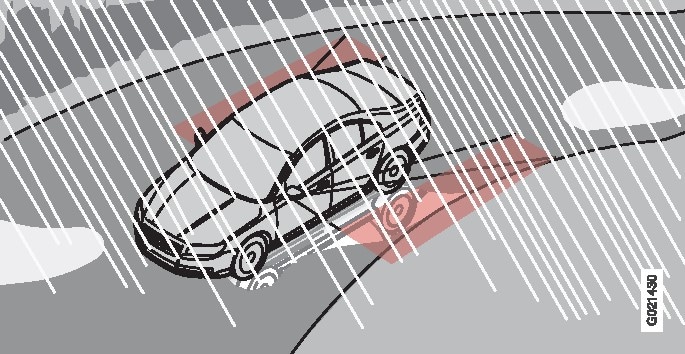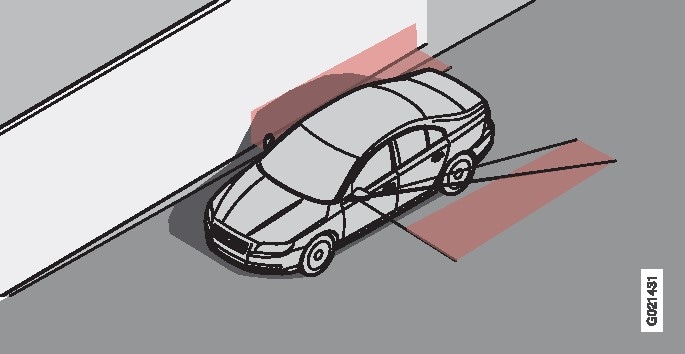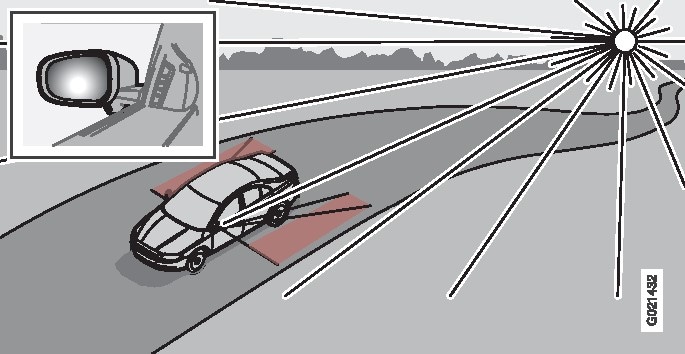Activate/deactivate BLIS
BLIS is activated when the engine is started. The indicator lamps in the door panels flash three times when BLIS is activated.
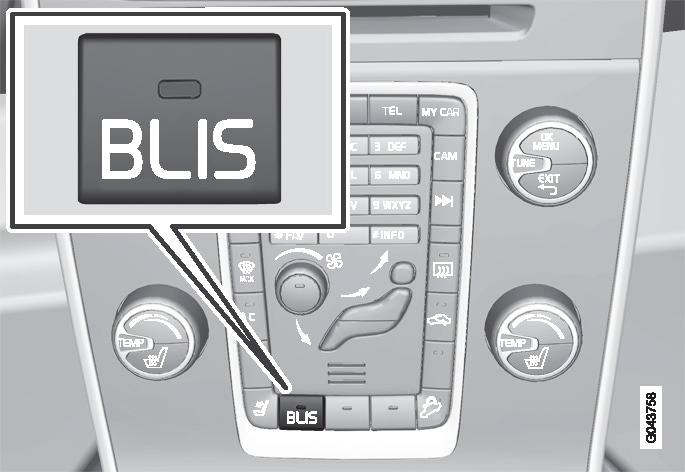
The system can be deactivated/activated after starting the engine with one press on the BLIS button.
Some combinations of the selected equipment leave no vacant space for a button in the centre console - in which case the function is handled by the car's menu system MY CAR.
When BLIS is deactivated, the lamp in the button extinguishes and a message is shown in the combined instrument panel.
When BLIS is activated the lamp in the button illuminates, the combined instrument panel shows a new text message and the indicator lamps in the door panels flash 3 times. Press the left-hand stalk switch OK button in order to switch off the text message.
When BLIS operates
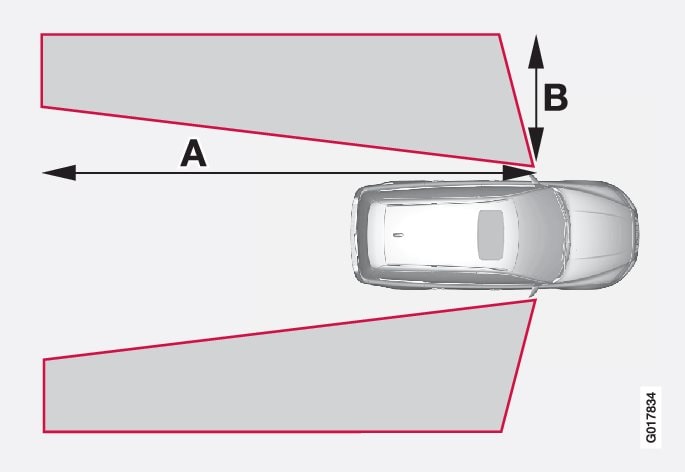
The system operates when the car is driven at a speed above 10 km/h.
When a camera (1) has detected a vehicle inside the blind spot zone the indicator lamp (2) illuminates with a constant glow, see overview illustration.
BLIS advises the driver with a message if a fault arises in the system. If, for example, the system's cameras are obscured then the BLIS indicator lamp flashes and a message is shown in the combined instrument panel. In such cases, check and clean the lenses.
If necessary, the system can be switched off temporarily, see "Activate/deactivate BLIS" above.
Overtaking
The system is designed to react if:
- you overtake another vehicle at a speed of up to 10 km/h faster than the other vehicle
- you are overtaken by a vehicle travelling up to 70 km/h faster than you are travelling.
Warning
BLIS does not work in sharp bends.
BLIS does not work when the car is reversing.
A wide trailer coupled to the car can conceal other vehicles in adjacent lanes. It can prevent the vehicle in the screened area from being detected by BLIS.
Daylight and darkness
In daylight the system reacts to the shape of the surrounding vehicles. The system is designed to detect motor vehicles such as cars, trucks, buses and motorcycles.
In darkness the system reacts to the headlamps of surrounding vehicles. If the headlamps of surrounding vehicles are not switched on then the system does not detect the vehicles. This means for example that the system does not react to a trailer without headlamps which is towed behind a car or truck.
Warning
The system does not react to cyclists or moped riders.
The BLIS cameras have limitations similar to those of the human eye, i.e. they do not "see" as well e.g. in heavy snowfall, against strong light or in thick fog.
Limitations
In some situations the BLIS indicator lamp may illuminate despite there being no other vehicle within the blind spot.
Note
If the BLIS indicator lamp illuminates on isolated occasions despite there being no other vehicle within the blind spot then this does not mean that a fault has arisen in the system.
In the event of a fault in the BLIS system the display shows the text Blind spot syst. Service required.
The following illustrations show examples of situations where the BLIS indicator lamp may illuminate even if there is no other vehicle within the blind spot.
